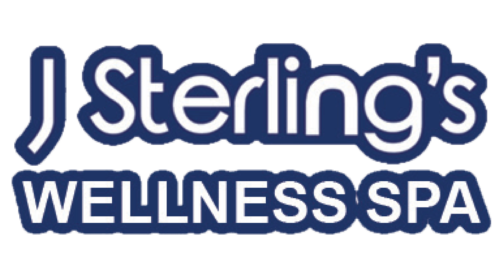J Sterling's Spa Gift Cards. The perfect gift for any occasion, any season!

What is Dermaplaning Facial?
During a dermaplaning session, the esthetician or skincare professional will cleanse your skin thoroughly and then use a sterile scalpel to gently scrape the surface of your skin at a 45-degree angle. This process removes dead skin cells, debris, and fine facial hair, revealing smoother, brighter skin underneath. The procedure is typically painless and can be performed on the entire face or specific areas, such as the cheeks, chin, and forehead.
Benefits of Dermaplaning Facial
Exfoliation: Removes dead skin cells and promotes cellular turnover, leading to a smoother and more radiant complexion.
Hair Removal: Eliminates fine vellus hair (peach fuzz) from the face, which can improve the application of makeup and skincare products.
Product Penetration: Enhances the absorption and effectiveness of skincare products by allowing them to penetrate deeper into the skin.
Smooth Skin Texture: Reduces the appearance of rough or uneven skin texture, fine lines, and superficial scars.
Instant Results: Provides immediate results with minimal downtime, making it a popular choice for those seeking quick skin rejuvenation.
Who Can Benefit from Dermaplaning?
Dermaplaning is suitable for individuals with various skin concerns and types, including:
- Dull or rough skin texture
- Fine lines and wrinkles
- Superficial acne scars
- Uneven skin tone
- Excessive vellus hair (peach fuzz)
However, dermaplaning may not be recommended for those with active acne, inflammatory skin conditions, or certain medical conditions that affect skin healing. It’s essential to consult with a qualified skincare professional to determine if dermaplaning is suitable for you and to discuss any potential risks or contraindications.
Aftercare Tips
- Sun Protection: Apply sunscreen daily to protect your skin from sun damage, as newly exposed skin may be more sensitive to UV rays.
- Avoid Harsh Products: Use gentle skincare products and avoid harsh exfoliants or treatments immediately after dermaplaning to prevent irritation.
- Hydration: Keep your skin hydrated by using a moisturizer suitable for your skin type.
- Follow-Up Treatments: Depending on your skincare goals, multiple dermaplaning sessions may be recommended to maintain results and improve skin health over time.

